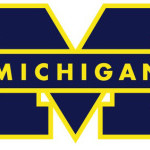- 업종: Education
- Number of terms: 31274
- Number of blossaries: 0
- Company Profile:
A 1988 report by a group of experts, chaired by Paolo Cecchini, examining the benefits and costs of creating a single market in Europe, in accordance with provisions of the Treaty of Rome.
Industry:Economy
A group of Central American countries -- El Salvador, Guatemala, Honduras, and Nicaragua -- that formed a common market in 1960, with Costa Rica added in 1962. It largely disintegrated in the 1970s and 80s due to military conflicts, but reformed as the Central American Free Trade Zone (but without Costa Rica) starting in 1993.
Industry:Economy
1. A free trade agreement initiated 2006 among Albania, Bosnia and Herzegovina, Croatia, the former Yugoslav Republic of Macedonia, Moldova, Montenegro, Serbia and the United Nations Interim Administration Mission in Kosovo. 2. A free trade agreement initiated 1993 among the Czech Republic, Hungary, Poland, Slovakia, and Slovenia, later also including Bulgaria and Romania. Its purpose was in part to reverse the bias against trade among these neighboring countries that had developed during the process of transition. This was superseded by the accession of these countries to the Europeann Union.
Industry:Economy
A function with constant elasticity of substitution. CES is popular for both production and utility functions. Used extensively in New Trade Theory as the Dixit-Stiglitz utility function for differentiated products under monopolistic competition. With arguments ''X'' = (''X''<sub>1</sub>,. . . ,''X<sub>n</sub>''), the function is ''F''(''X'') = ''A''(''<sub>i</sub>a<sub>i</sub>X<sub>i</sub>'')<sup>1/</sup>, where ''a<sub>i</sub>'', ''A'' are positive constants and = 1/(1-) is the elasticity of substitution. Due to Arrow et al. (1961).
Industry:Economy
A form of large business in South Korea, a conglomerate consisting of many companies centered around a parent company. They are family controlled and have strong ties to government. They are similar to the keiretsu of Japan, except that the chaebol do not own banks.
Industry:Economy
A ranking of goods or countries in order of comparative advantage. With two countries and many goods, goods can be ranked by comparative advantage (e.g., by relative unit labor requirements in the Ricardian model). A country's exports will then lie nearer one end of the chain than its imports. With two goods, many countries can be ordered similarly.
Industry:Economy
1. In NAFTA, this portion deals with foreign direct investment. Most controversially, it includes a provision for a firm from one member country that has invested in another to bring action against a unit of government in that country if it has acted to reduce the value of its investment. 2. A portion of U. S. Bankruptcy law under which a firm can file for protection while it reorganizes.
Industry:Economy
An agreement in 2000 among the "ASEAN+3" countries (ASEAN plus China, Japan, and S. Korea) to cooperate in four main areas: monitoring capital flows, regional surveillance, swap networks, and training personnel.
Industry:Economy
A trade dispute between the U. S. And the EEC that began in 1962 when the EEC extended the variable levy of the CAP to poultry, tripling German tariffs on U. S. Chickens. A GATT panel quantified the damage and led to U. S. Retaliatory tariffs on cognac, trucks, and other goods. The U. S. 25% tariff on trucks today is a remnant of the chicken war.
Industry:Economy
1. Employment of children under a specified minimum age. 2. Work that harmful to a child's physical or mental health, development, or education, and that is therefore targeted for elimination by labor standards.
Industry:Economy
